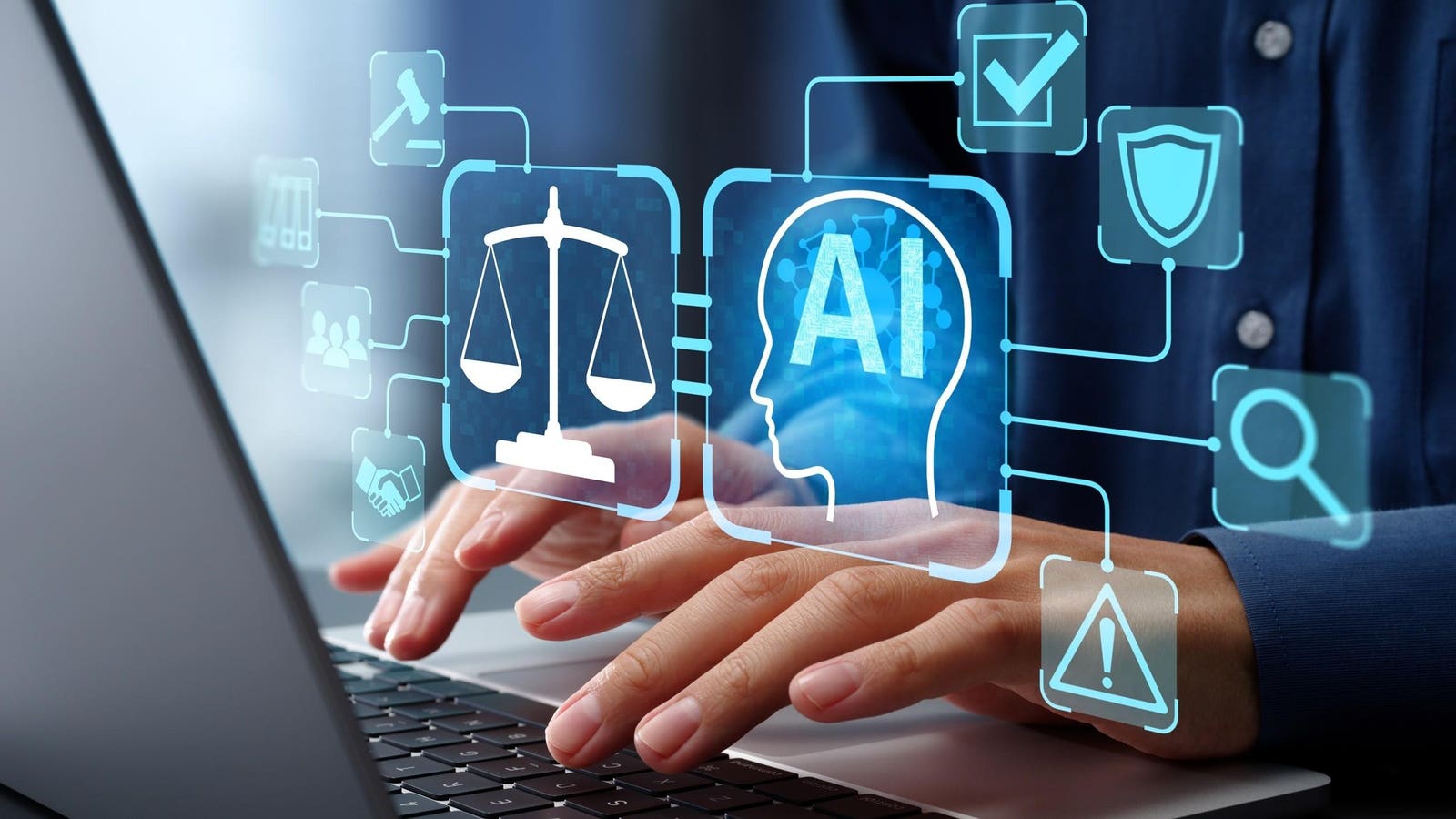Innovation and Technology
The Top 10 Trends Shaping the Future of Work

The world of work is undergoing a significant transformation, driven by technological advancements, shifting workforce demographics, and evolving employee expectations. Future of work innovations are revolutionizing the way we work, interact, and collaborate. In this article, we will explore the top 10 trends shaping the future of work, and what they mean for employees, employers, and the economy as a whole.
Introduction to the Future of Work
The future of work is all about embracing change, being adaptable, and leveraging technology to enhance productivity and efficiency. With the rise of artificial intelligence, automation, and the gig economy, the traditional 9-to-5 job is becoming a thing of the past. Employees are seeking more flexibility, autonomy, and purpose in their work, while employers are looking for ways to attract and retain top talent in a competitive job market.
Defining the Future of Work
The future of work is a complex and multifaceted concept that encompasses a range of trends, technologies, and ideologies. At its core, it’s about creating a work environment that is more human-centered, more flexible, and more resilient. It’s about leveraging technology to augment human capabilities, rather than replacing them. And it’s about creating a sense of purpose and meaning in work, that goes beyond just earning a paycheck.
The Top 10 Trends Shaping the Future of Work
So, what are the top 10 trends shaping the future of work? Let’s take a closer look:
Trend #1: Artificial Intelligence and Automation
Artificial intelligence and automation are transforming the way we work, by augmenting human capabilities and enhancing productivity. AI-powered tools are being used to automate routine tasks, freeing up employees to focus on more strategic and creative work.
Trend #2: The Gig Economy
The gig economy is on the rise, with more and more employees opting for flexible, freelance work arrangements. This trend is driven by the desire for autonomy, flexibility, and work-life balance.
Trend #3: Remote Work
Remote work is becoming the new norm, with many employees working from home, coffee shops, or co-working spaces. This trend is driven by the advancement of digital communication tools, and the desire for flexibility and work-life balance.
Trend #4: Upskilling and Reskilling
The future of work requires employees to be constantly learning, upskilling, and reskilling. With technological advancements happening at a rapid pace, employees need to stay ahead of the curve to remain relevant.
Trend #5: Diversity, Equity, and Inclusion
The future of work is all about creating a more diverse, equitable, and inclusive work environment. Employers are recognizing the importance of diversity, and are taking steps to create a more welcoming and inclusive workplace culture.
Trend #6: Employee Experience
The employee experience is becoming a top priority for employers, with a focus on creating a positive, engaging, and supportive work environment. This includes everything from wellness programs to recognition and rewards.
Trend #7: Virtual and Augmented Reality
Virtual and augmented reality are transforming the way we work, by creating immersive, interactive, and engaging experiences. These technologies are being used in industries such as healthcare, education, and entertainment.
Trend #8: Blockchain and Cryptocurrency
Blockchain and cryptocurrency are revolutionizing the way we work, by creating secure, transparent, and decentralized systems. These technologies are being used in industries such as finance, supply chain management, and cybersecurity.
Trend #9: The Internet of Things
The Internet of Things (IoT) is transforming the way we work, by creating a more connected, efficient, and productive work environment. IoT devices are being used in industries such as manufacturing, logistics, and smart cities.
Trend #10: Sustainability and Social Responsibility
The future of work is all about creating a more sustainable, socially responsible, and environmentally friendly work environment. Employers are recognizing the importance of sustainability, and are taking steps to reduce their carbon footprint, and create a positive impact on society.
Conclusion
In conclusion, the future of work is a complex and multifaceted concept that encompasses a range of trends, technologies, and ideologies. By embracing these trends, and leveraging technology to enhance productivity and efficiency, we can create a more human-centered, flexible, and resilient work environment. The top 10 trends shaping the future of work are artificial intelligence and automation, the gig economy, remote work, upskilling and reskilling, diversity, equity, and inclusion, employee experience, virtual and augmented reality, blockchain and cryptocurrency, the Internet of Things, and sustainability and social responsibility.
Frequently Asked Questions
Here are some frequently asked questions about the future of work:
Q: What is the future of work?
A: The future of work refers to the changing nature of work, driven by technological advancements, shifting workforce demographics, and evolving employee expectations.
Q: What are the top trends shaping the future of work?
A: The top 10 trends shaping the future of work are artificial intelligence and automation, the gig economy, remote work, upskilling and reskilling, diversity, equity, and inclusion, employee experience, virtual and augmented reality, blockchain and cryptocurrency, the Internet of Things, and sustainability and social responsibility.
Q: How will the future of work impact employees?
A: The future of work will impact employees in a range of ways, including the need for constant learning, upskilling, and reskilling, as well as the desire for flexibility, autonomy, and work-life balance.
Q: How will the future of work impact employers?
A: The future of work will impact employers in a range of ways, including the need to create a more diverse, equitable, and inclusive work environment, as well as the need to leverage technology to enhance productivity and efficiency.
Q: What can I do to prepare for the future of work?
A: To prepare for the future of work, you can start by developing new skills, building a professional network, and staying up-to-date with the latest trends and technologies. You can also consider pursuing further education, or seeking out mentorship and coaching.
Innovation and Technology
The AI Dilemma: How Machines are Raising Questions of Morality and Ethics

With AI and automation for impact, the world is witnessing a significant transformation in the way we live and work. As machines become increasingly intelligent and autonomous, they are raising complex questions about morality and ethics that challenge our understanding of right and wrong. The AI dilemma is a pressing concern that requires careful consideration and nuanced discussion. In this article, we will delve into the intricacies of this dilemma and explore its implications for humanity.
Understanding the AI Dilemma
The AI dilemma refers to the ethical and moral concerns that arise from the development and deployment of artificial intelligence systems. As machines become more advanced, they are capable of making decisions that can have significant consequences for individuals and society as a whole. The dilemma arises when we consider whether machines should be programmed to prioritize human well-being, efficiency, or other values.
Autonomy and Decision-Making
One of the primary concerns surrounding the AI dilemma is the issue of autonomy and decision-making. As machines become more autonomous, they are able to make decisions without human input or oversight. This raises questions about accountability and responsibility, as well as the potential for machines to make decisions that are detrimental to human well-being.
Value Alignment
Another key aspect of the AI dilemma is the issue of value alignment. As machines are programmed to optimize certain objectives, they may prioritize values that are not aligned with human values. For example, a machine designed to optimize efficiency may prioritize productivity over human safety or well-being. This highlights the need for careful consideration of the values that are embedded in AI systems.
The Impact of AI on Society
The AI dilemma has significant implications for society, from the way we work and live to the way we interact with each other. As machines become more advanced, they are likely to have a profound impact on the job market, the economy, and our social structures.
Job Displacement and Economic Impact
One of the most significant concerns surrounding the AI dilemma is the potential for job displacement. As machines become more advanced, they are likely to automate many tasks currently performed by humans, leading to significant job losses. This raises questions about the economic impact of AI and the need for strategies to mitigate the effects of job displacement.
Social and Cultural Implications
The AI dilemma also has significant social and cultural implications. As machines become more integrated into our lives, they are likely to change the way we interact with each other and the way we understand ourselves. This raises questions about the potential for AI to exacerbate existing social inequalities and the need for careful consideration of the social and cultural implications of AI.
Addressing the AI Dilemma
Addressing the AI dilemma requires a multifaceted approach that involves governments, corporations, and individuals. It is essential to develop strategies that prioritize human well-being, safety, and dignity, while also promoting the development of AI that is aligned with human values.
Regulation and Governance
One of the key strategies for addressing the AI dilemma is the development of regulatory frameworks that prioritize human well-being and safety. Governments and corporations must work together to establish standards and guidelines for the development and deployment of AI systems.
Education and Awareness
Another essential strategy is education and awareness. It is crucial to raise awareness about the potential risks and benefits of AI and to educate individuals about the importance of prioritizing human values in AI development.
Conclusion
The AI dilemma is a complex and multifaceted issue that requires careful consideration and nuanced discussion. As machines become increasingly intelligent and autonomous, they are raising significant questions about morality and ethics that challenge our understanding of right and wrong. Addressing the AI dilemma requires a multifaceted approach that involves governments, corporations, and individuals, and prioritizes human well-being, safety, and dignity. By working together, we can ensure that the development of AI is aligned with human values and promotes a future that is beneficial for all.
Frequently Asked Questions
What is the AI dilemma?
The AI dilemma refers to the ethical and moral concerns that arise from the development and deployment of artificial intelligence systems.
What are the implications of the AI dilemma for society?
The AI dilemma has significant implications for society, from the way we work and live to the way we interact with each other. It raises questions about job displacement, economic impact, social and cultural implications, and the need for careful consideration of the values that are embedded in AI systems.
How can we address the AI dilemma?
Addressing the AI dilemma requires a multifaceted approach that involves governments, corporations, and individuals. It is essential to develop strategies that prioritize human well-being, safety, and dignity, while also promoting the development of AI that is aligned with human values. This includes regulation and governance, education and awareness, and the development of standards and guidelines for AI development and deployment.
What is the future of AI?
The future of AI is uncertain, but it is likely to be shaped by the decisions we make today. By prioritizing human values and promoting the development of AI that is aligned with human well-being, safety, and dignity, we can ensure that the future of AI is beneficial for all.
How can I get involved in addressing the AI dilemma?
There are many ways to get involved in addressing the AI dilemma, from participating in public discussions and debates to supporting organizations that prioritize human values in AI development. Individuals can also make a difference by educating themselves about the potential risks and benefits of AI and by promoting awareness about the importance of prioritizing human values in AI development.
Innovation and Technology
AI Agents Deliver Productivity, But That’s Only Part Of The Story

Introduction to AI Agents in the Workplace
The word on agentic AI’s ability to deliver on its promises is: so far, so good. With caveats. A majority of 300 senior executives adopting AI agents, 66%, say they’re delivering positive results in terms of productivity, a recent PwC survey suggests. But, let’s face it — all systems deliver some degree of productivity. What executives need is that extra edge that delivers extreme competitive differentiation.
Current State of AI Agents
At this point, few AI agents are ”transforming how work gets done," the PwC report’s authors state. “Many employees are using agentic features built into enterprise apps to speed up routine tasks — surfacing insights, updating records, answering questions. It’s a meaningful boost in productivity, but it stops short of transformation.” The biggest barrier isn’t the technology; “it’s mindset, change readiness and workforce engagement,” the PwC authors conclude.
Challenges and Limitations
Mahe Bayireddi, CEO and co-founder of Phenom, which offers agents for HR tasks, agrees this is where the challenge lies. “I think there’s a lot of learning in this whole process,” he said. “There are no experts dynamically saying how they can handle AI agents effectively.” Agents can bring up productivity almost by 20-30%, if they use it in the right format, do the change management effectively, and use the data in an engagement format,” Bayireddi continued. “The point is how do they make it fly, how do they manage the change management."
Importance of Context and Personalization
AI agents and the data they consume need to be domain-specific, and will vary industry to industry, company to company. “The data at the universal level is actually complex," he said. "The nuance of a context and that nuance of personalization is very critical for AI to work. It can’t be too general.” The rise of agents advances generative AI to more practical levels. Once put into place, agents can be “baked into the workflows," he said. “Up to now, everybody has had to go to ChatGPT and ask a question and get an answer. It’s not the way how people work.”
Future of Work with AI Agents
The emphasis needs to be on addressing the nuances of functions and processes to be automated with agents. “That has to manifest in an effective format with a context,” he said. "That can only happen with an agent being effective in a department.” Bayireddi doesn’t see agents as a threat to jobs, but they will change the nature of jobs. “There are new jobs which are going to come up because of agents. There is a new work which is also going to pop up because of agents. Skills is one thing, but also the work will change and the jobs will change.”
Conclusion
Don’t settle for too little when it comes to AI agents, the PwC authors advised. “Companies that stop at pilot projects will soon find themselves outpaced by competitors willing to redesign how work gets done. We see few companies moving early to define the future, building new operating models that integrate and orchestrate multiple AI agents. Fewer than half are fundamentally rethinking operating models and how work gets done (45%) or redesigning processes around AI agents (42%).”
FAQs
Q: What percentage of senior executives say AI agents are delivering positive results in terms of productivity?
A: 66%
Q: What is the biggest barrier to AI agent adoption?
A: Mindset, change readiness, and workforce engagement
Q: Can AI agents bring up productivity?
A: Yes, by 20-30% if used in the right format and with effective change management
Q: Will AI agents replace jobs?
A: No, but they will change the nature of jobs and create new ones.
Innovation and Technology
Generative AI Tools For Lawyers

Introduction to AI in Law
For seasoned lawyers, as well as laypeople, simply trying to make sense of a tricky contract, new tools powered by generative AI promise to transform the way we engage with the law. Legal professionals often devote large chunks of their time to drafting contracts, researching previous cases, preparing documents for submission to court, or reviewing case law. Even for non-lawyers, many everyday tasks can require diving into legal concepts and principles—wading through corporate T&Cs, tenancy agreements, consumer rights advice or business compliance.
The Rise of GenAI Tools in Law
Fortunately, lawyers—professional and armchair varieties—are finding that there’s a wealth of genAI tools out there that can make their lives easier. So here’s my rundown of some of the leading apps, tools, and services that help with legal tasks. Some can help law firms and professionals automate dull and repetitive jobs, while others aim to make the legal systems and courts more accessible to laypeople.
Leading AI Platforms for Legal Tasks
Harvey AI is among the market-leading legal AI platforms. Like many of the tools here, it’s built on LLM technology (in this case, OpenAI’s GPT models that also power ChatGPT). However, it’s been fine-tuned to be particularly efficient when it comes to legal tasks such as research, contract analysis and compliance. As well as the vast amounts of training data at its disposal, it is further fine-tuned on domain-specific legal knowledge to ensure firms get assistance that’s tailored to their own way of working. Harvey now also offers agentic genAI capabilities, allowing it to work autonomously on carrying out longer, multi-step tasks.
LexisNexis has existed for more than 50 years as a database of legal information, including court decisions, judgments and case law. Today, it’s been given a generative AI upgrade in the form of Lexis+, which is designed to act as an AI legal assistant. Users—generally legal professionals—can engage through a conversational search interface in order to create tailored legal documents, and correspondence, as well as identify relevant case law, statutes and legal commentary. It also provides instant summaries of complex legal texts and integrates with Lexis’s Shepard Citation Service, ensuring citations are correct and up-to-date.
Consumer-Focused AI Tools
This is a web-based platform offering generative AI tools for a wide variety of legal tasks often faced by consumers and laypeople, including fighting parking charges, reclaiming debts and disputing bank fees. It isn’t purely AI-based—there is a strong community element to the service, too, and plenty of articles giving useful advice on a number of consumer rights, data protection and privacy issues. Billed as the "consumer AI champion," it can be used to generate dispute letters, file claims and navigate complex court processes no matter how inexperienced a user is in legal matters.
AI Assistants for Legal Professionals
Operated by Thompson Reuters, CoCounsel is an AI legal assistant that crunches through repetitive digital workloads like reviewing documents, researching case law, and identifying critical questions. It has developed a reputation as trustworthy among law firms due to a focus on robust data protection and privacy safeguards. CoCounsel has also added what it calls agentic functionality to its platform. Although it isn’t yet clear what their AI agents will do, it’s speculated that the legal industry will be heavily impacted by the adoption of these next-generation AI tools that promise even greater levels of automation.
Streamlining Legal Document Creation
GenAI-powered lawtech platform was built to streamline the creation of legal documents and the negotiation involved in contracts and agreements. Specifically tailored for startups and small businesses without full in-house legal teams, it offers AI-customized legal templates from employment contracts to NDAs, covering any standard documentation that smaller organizations might require. As it’s designed to be used by non-professionals as well as professionals, it features powerful functionality around reducing complexity and providing easy-to-digest explanations of contract clauses.
More Great Tools
That’s far from all of the tools out there designed for lawyers and armchair lawyers. If none of the above do exactly what you need, take a look at one of these:
- Blue J: AI-powered research assistant designed to help accountants and other professional services understand tax laws.
- ContractPod AI: Users of enterprise legal AI platform ContractPod can access Leah, a virtual legal ass
-

 Career Advice6 months ago
Career Advice6 months agoInterview with Dr. Kristy K. Taylor, WORxK Global News Magazine Founder
-

 Diversity and Inclusion (DEIA)6 months ago
Diversity and Inclusion (DEIA)6 months agoSarah Herrlinger Talks AirPods Pro Hearing Aid
-

 Career Advice6 months ago
Career Advice6 months agoNetWork Your Way to Success: Top Tips for Maximizing Your Professional Network
-

 Changemaker Interviews5 months ago
Changemaker Interviews5 months agoUnlocking Human Potential: Kim Groshek’s Journey to Transforming Leadership and Stress Resilience
-

 Diversity and Inclusion (DEIA)6 months ago
Diversity and Inclusion (DEIA)6 months agoThe Power of Belonging: Why Feeling Accepted Matters in the Workplace
-

 Global Trends and Politics6 months ago
Global Trends and Politics6 months agoHealth-care stocks fall after Warren PBM bill, Brian Thompson shooting
-

 Global Trends and Politics6 months ago
Global Trends and Politics6 months agoUnionization Goes Mainstream: How the Changing Workforce is Driving Demand for Collective Bargaining
-

 Training and Development6 months ago
Training and Development6 months agoLevel Up: How Upskilling Can Help You Stay Ahead of the Curve in a Rapidly Changing Industry









